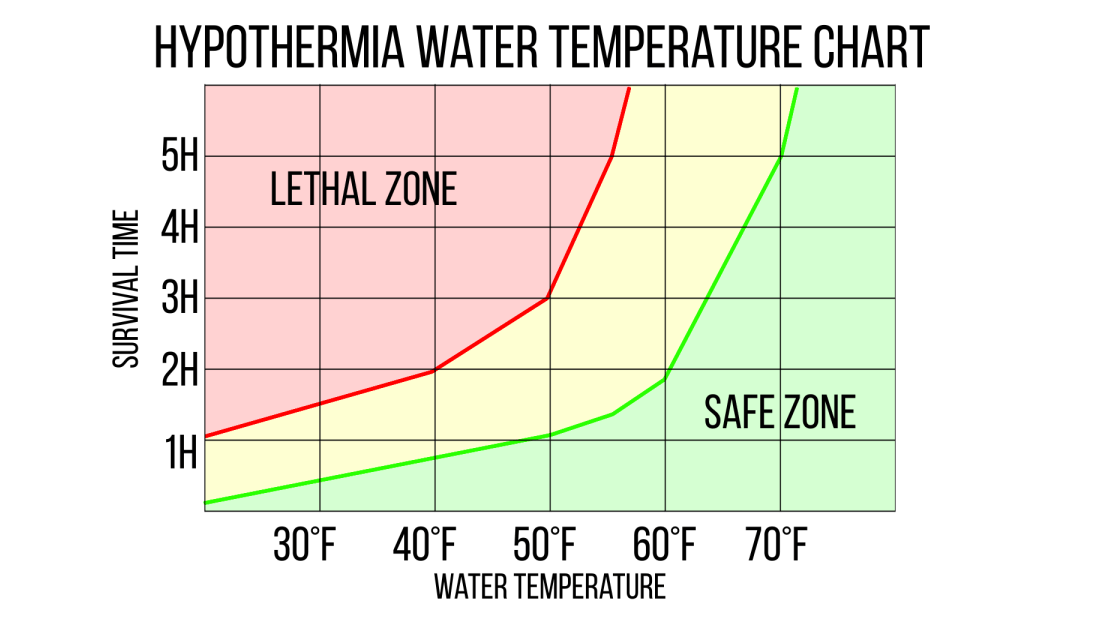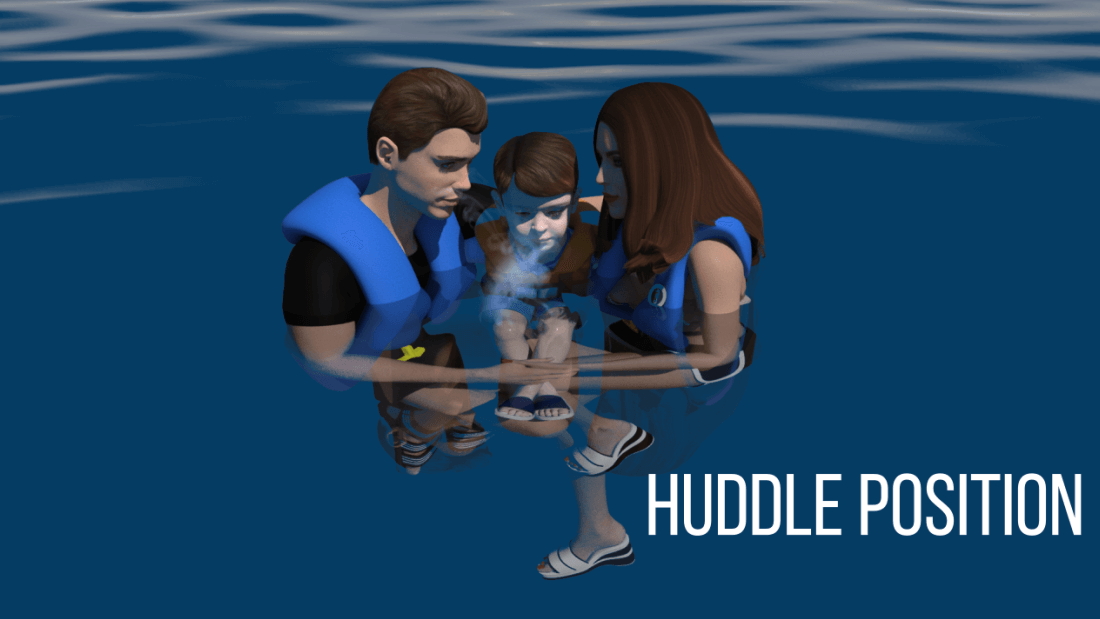4 Stages of Cold Water Immersion
Even when the weather is warm, do not forget that in many areas the water can be very, very cold. A sudden unexpected wake or other "unbalancing event" can land you in the frigid water. Your body can cool down 25 times faster in water than in air of the same temperature. (Not all bodies will cool down at that rate.) Being immersed in cold water is the greatest danger of developing hypothermia. Cold water immersion creates a specific condition known as immersion hypothermia. It develops much more quickly than standard hypothermia because water conducts heat away from the body 25 times faster than air.
What are the 4 stages of Cold Water Immersion?
Stage 1 - Cold shock
Stage 2 - Swimming failure
Stage 3 - Hypothermia
Stage 4 - Post-rescue collapse
The effects of cold water on the body happen in 4 stages.
Stage 1 - Cold shock
A sudden, unexpected entry into cold water may cause a reflexive "gasp" (cold shock) allowing water to enter the lungs. Drowning can be almost instantaneous. When you realize you’re about to fall into the water, cover your face with your hands. Covering your mouth is an attempt to avoid gulping water into your lungs.
Stage 2 - Swimming failure
-
Loss of manual dexterity.
-
Inability to match breathing rate to swimming stroke.
-
Loss of coordination in the muscles in your arms and legs as they get cooler, increasing your swimming angle.
-
Increased swimming angle, requiring more energy to keep your head above water.
-
Possible drowning.
Stage 3 - Hypothermia
Hypothermia is a condition that exists when the body’s temperature drops below ninety-five degrees. This can be caused by exposure to water or air. The loss of body heat results in loss of dexterity, loss of consciousness, and eventually loss of life.
If you find yourself in cold water, keep your clothes on to retain heat.
If you examine the chart below you will see that survival time can be as short as 15 minutes. Water temperature, body size, amount of body fat, and movement in the water all play a part in cold-water survival. Small people cool faster than large people and children cool faster than adults.

How long someone can survive in cold water?
Hypothermia Water Temperature Chart |
||
|
Water |
Exhaustion or |
How long can someone survive? |
|
32.5 |
Under 15 min. |
Under 15 - 45 min. |
|
32.5 - 40 |
15 - 30 min. |
30 - 90 min |
|
40 - 50 |
30 - 60 min. |
1 - 3 hours |
|
50 - 60 |
1 - 2 hours |
1 - 6 hours |
|
60 - 70 |
2 - 7 hours |
2 - 40 hours |
|
70 - 80 |
3 - 12 hours |
3 - Indefinite
|
PFDs can help you stay alive longer in cold water. You can float without using energy and PFDs cover part of your body, providing some protection from the cold water. When boating in cold water, you should consider using a flotation coat or deck-suit style PFD. They cover more of your body and provide even more protection.
Hypothermia does not only occur in extremely cold water. It can, and does, occur even in the warmer waters of Florida and the Bahamas.
Hypothermia is progressive - the body passes through several stages before an individual lapses into an unconscious state. The extent of a person’s hypothermia can be determined from the following:
-
Mild Hypothermia - the person feels cold, has violent shivering and slurred speech.
-
Medium Hypothermia - the person has a certain loss of muscle control, drowsiness, incoherence, stupor and exhaustion.
-
Severe Hypothermia - the person collapses, may be unconscious and shows signs of respiratory distress and/or cardiac arrest probably leading to death.
The foremost objective for a person in the water is getting control over breathing and getting out of the water. To accomplish this and to limit heat loss, limit body movement. Don't swim unless you can reach a nearby boat or floating object. Swimming lowers your body temperature and even good swimmers can drown in cold water.
If you can pull yourself partially out of the water - do so. The more of your body that is out of the water (on top of an over-turned boat or anything that floats), the less heat you will lose. Especially keep your head out of the water if at all possible - this will lessen heat loss and increase survival time.
Wearing a PFD in the water is a key to survival. A PFD allows you to float with a minimum of energy expended and allows you to assume the heat escape lessening position - H. E. L. P.
This position, commonly referred to as the fetal position, permits you to float effortlessly and protect those areas most susceptible to heat loss, including the armpits, sides of the chest, groin, and the back of the knees.

If you find yourself in the water with others, huddle together facing each other with their arms around each other's shoulders.

Stage 4 - Post-rescue collapse
The effects on your body after you are pulled from the water can include the following:
-
Loss of hydrostatic pressure from the water causes a sudden drop inblood pressure. This can cause heart or brain failure.
-
Your heart is cold and cannot pump cold blood effectively to maintain blood pressure.
-
Your lungs are damaged from the water you inhaled. This can cause a pneumonia-like illness.
-
Fatal bleeding from injuries may occur as your body warms up and your blood flows more freely. You may have internal injuries or injuries to your head and neck that you and your rescuers are not aware of.
-
Up to 20 percent of all survivors die during rescue or shortly after.